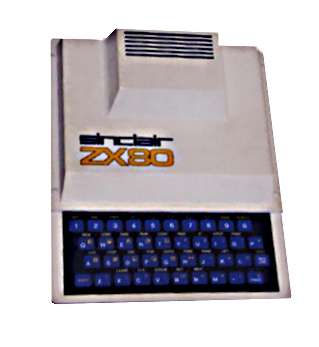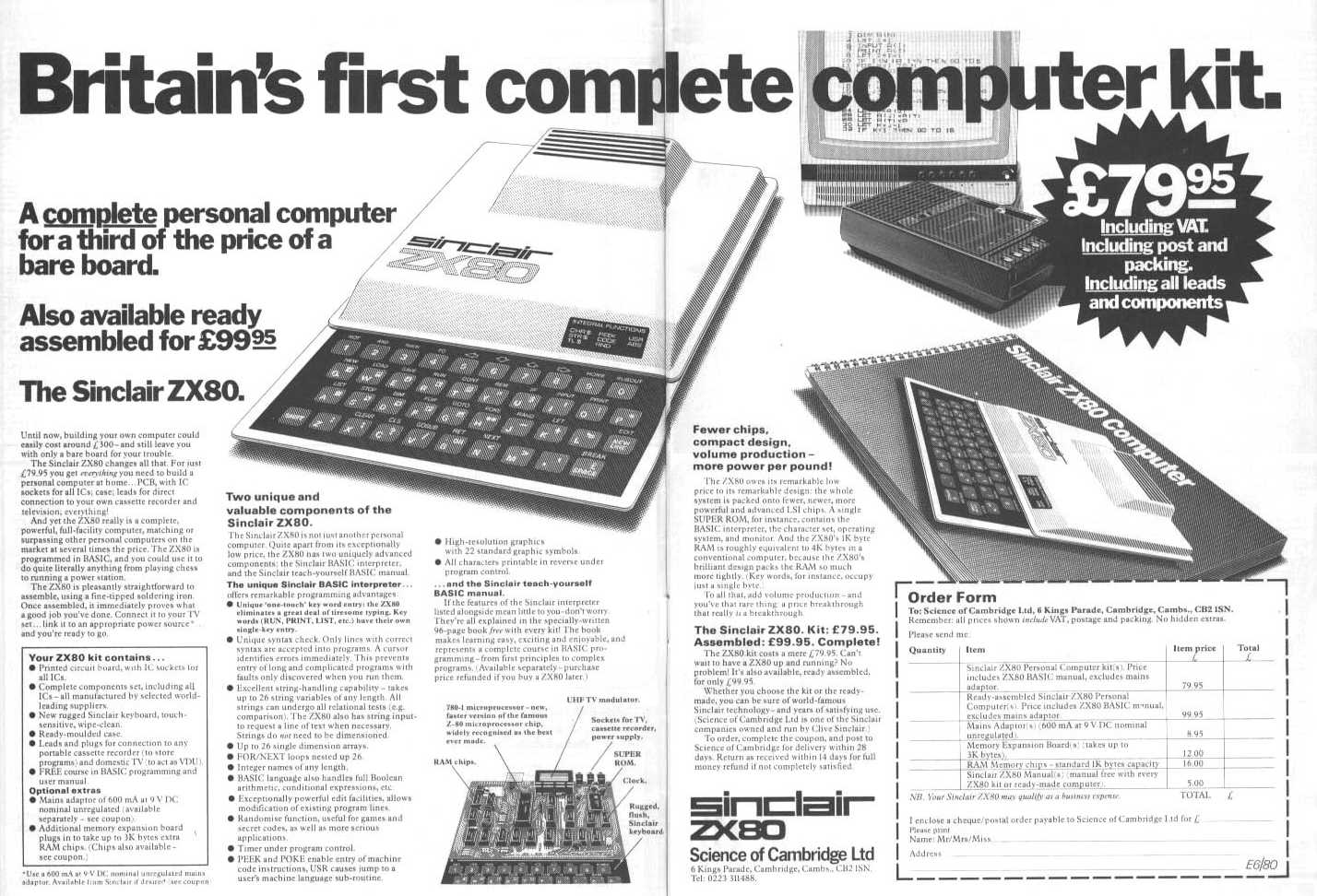| Clive Sinclair And The Small Home Computer Revolution |
| Written by Historian | |||||||
Page 3 of 3
ZX80In 1980 the ZX80 was launched - the smallest and cheapest home computer yet. It used a Z80 microprocessor, had 1K of RAM and a 4KByte ROM which contained a specially written integer Basic - the whole lot cost £99.95, or £79 in kit form.
The ZX80
The innovations that made this possible were typically Sinclair. For example, was no video controller chip - the Z80 generated the video signal. This saved a very expensive component but meant that the machine couldn't compute and display at the same time - so when it was working the screen flashed and sometimes rolled until the video signal came back. The ZX80 incorporated far too many innovations for me to mention them all but the keyboard is especially noteworthy. This was a membrane design, typical of the Sinclair calculator range but it had the Basic keywords included on it. This allowed the user to enter PRINT by pressing a single key and simplified the design of the Basic interpreter because there was no need to parse the input. Simple and effective. Perhaps one of the biggest factors in the sucess of the ZX80 was the advertising. It made it look like something worth buying. Most early adopters weren't disapointed when they first got it but the only fun you could have with it was writing programs. The video hardware made it very difficult to create any sort of game because the display was switched off when the machine was doing any sort of computation. The ZX80 was more like a calculator that you could program in basic and used a TV to display its output.
ZX81The next step was the ZX81. A much improved design because it used a single chip ULA (Uncommitted Logic Array) to implement a video controller, timing and interface unit. This reduced the chip count to just four and got rid of the flashing that the ZX80 suffered from. The ZX81 was probably the first usable Sinclair machine and thousands of people learned to program using on.
The ZX81
From today's persective the memory size of the ZX81 has to be its remarkable feature. There were two versions - the 1K (yes 1 kilobyte) and the expanded 16K. Even so there were games you could play using it and even some rudimentary applications! At this point a strange series of events occurred that, while I was involved with them at a distance, I still don't quite understand. The BBC decided to produce a computer literacy series, which was reasonable enough, but they also decided to badge a particular machine for use. The contest to see who would produce the BBC micro helped to make the relationship between Sinclair and Chris Curry worse. In the end Acorn got the contract. And it has to be said that the BBC micro that they produced was advanced for its time and much better than the ZX81 - but then it was at least four times the price. Sinclair may not have got the BBC contract but he was knighted in the same year. ZX SpectrumAfter the BBC incident the Spectrum, the ZX82, was launched. What you may not realise is that it was the best selling machine produced by any UK company and sold millions.
(Photo by Bill Bertram) QLThe next machine though was less of a success. The QL, or Quantum Leap, was a complete break with the past. Based on a 68000 it was to be a business machine. Sinclair Research had to write a completely new operating system and a Basic interpreter for it and got Psion to write an integrated package for it. The project ran late - very late - and lots of people got very disillusioned with Sinclair Research. As it happened the personal microcomputer boom was about over and when the QL was delivered it didn't make enough money for the troubled company.
Sinclair's other obsession - the C5 electric car - was draining away resources and spoiling his image. The car look ridiculous at best and dangerous at worst to most people This time Sinclair was rescued by Amstrad who bought all rights to the company's products in 1986.. Phoenix-like Sinclair rose yet again! This time as Cambridge Computers and the Z88 portable computer. At the same time Sinclair Research moved into satellite dishes and receivers. Sinclair set up Anamartic to build super computers on a single chip but no chips were ever produced. It seems that the time of the computer innovator has come and gone. The IBM PC locked us into a single design so tightly that the idea of innovation is long gone - just a steady improvement in what we already have. There seems to be no room for the Sinclairs of this world anymore - or have they just moved to a new arena of technical creativity.
Related ArticlesSir Clive Sinclair Dies Aged 81 Steve Jobs and the Early Apple Years The SWTP Effect - How The Microcomputer Revolution Started In The UK To be informed about new articles on I Programmer, sign up for our weekly newsletter, subscribe to the RSS feed and follow us on Twitter, Facebook or Linkedin.
Comments
or email your comment to: comments@i-programmer.info <ASIN:0246120479> <ASIN:0859340899> <ASIN:0246125152> <ASIN:0246120258>
|
|||||||
| Last Updated ( Saturday, 13 August 2022 ) |







